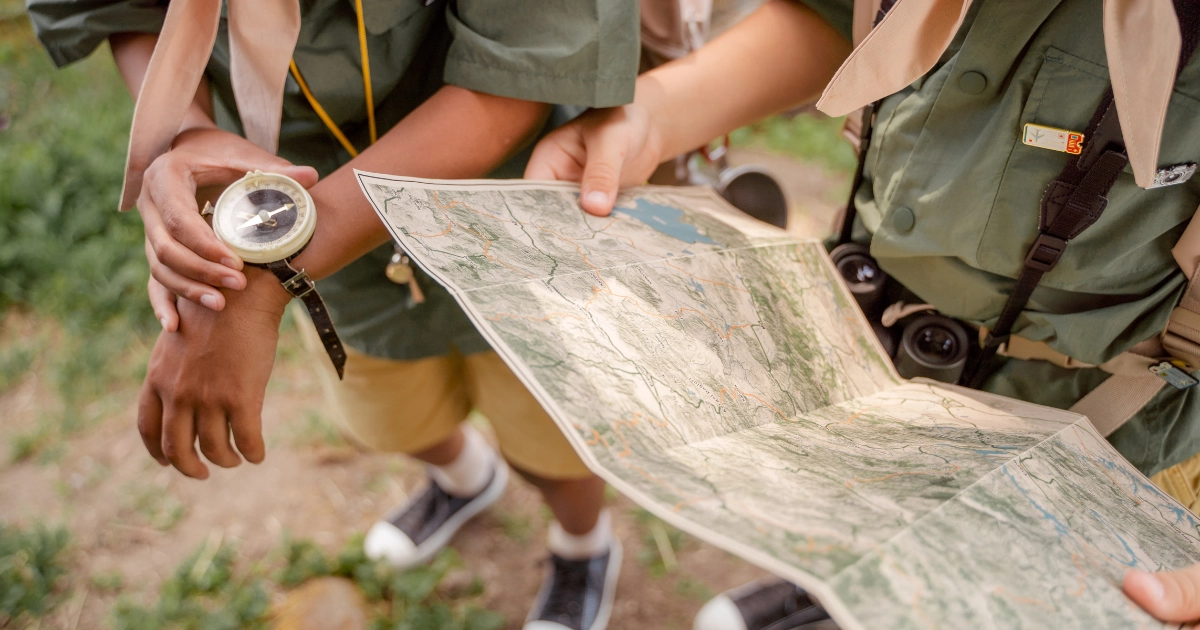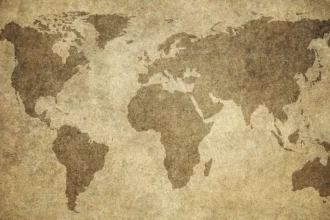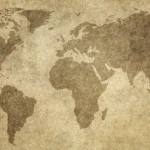Looking at the map of Africa, Morocco is a standout spot at the northwestern edge. Is Morocco located in Africa? Yes, it is! This North African country is a key spot where Europe and Africa meet. It draws in both travelers and geography fans.
Morocco isn’t just a place on the map — it’s where Africa greets Europe with mountains, coasts, and endless wonder
Visitor
Morocco’s unique spot makes it a bridge between two continents. Where is Morocco exactly? It’s at the westernmost point of North Africa, touching the Mediterranean Sea and the Atlantic Ocean. This spot mixes cultures and geography in a special way, making Morocco stand out.
The country’s location lets visitors see a mix of landscapes. From coastlines to mountains and deserts, Morocco’s beauty is on full display. Its setting showcases the varied natural wonders of North Africa.
Key Takeaways
- Morocco is definitively located in North Africa
- Borders Mediterranean Sea and Atlantic Ocean
- Connects European and African continental influences
- Positioned at the northwestern tip of Africa
- Offers diverse geographic landscapes
Understanding Morocco’s Geographic Position in Africa
Exploring where Morocco is located shows a country with a remarkable spot. It’s in the northwestern corner of Africa. Morocco is at a key spot that links continents and waters.
The map of Morocco shows a unique landscape. It spans different geographic zones. Its location makes it a key spot between Africa and Europe, setting it apart from other North African countries.
Northern African Boundaries and Borders
Morocco’s boundaries are defined by several key features:
- Northern border along the Mediterranean coastline
- Western edge touches the Atlantic Ocean
- Eastern boundary is next to Algeria
- The southern boundary is next to Mauritania
Strategic Location Between Mediterranean and Atlantic
Understanding Morocco’s location gets clearer when you see its unique spot. The country acts as a natural bridge between the Mediterranean Sea and the Atlantic Ocean. This spot has made Morocco key for trade, communication, and cultural exchange.
Distance from Major European Cities
Morocco is close to Europe. From its northern coast, you can see Spain, with some spots less than 14 kilometers apart. Key distances include:
| City | Approximate Distance |
|---|---|
| Madrid, Spain | 560 kilometers |
| Lisbon, Portugal | 670 kilometers |
| Gibraltar | 14 kilometers |
These features make Morocco a fascinating place with great strategic importance.
Where Is Morocco Located on the World Map
Exploring Morocco’s map shows a unique spot in North Africa. It’s at the northwestern tip of Africa. Morocco is at a key spot where continents and seas meet.
The country’s location is between 27° and 36° North latitude and 11° West to 17° East longitude. This spot is very beneficial:
- Close to Europe across the Mediterranean Sea
- Direct access to the Atlantic Ocean
- Gateway between Africa and the Middle East
Looking at Morocco on a world map, you see its triangular shape. It covers about 710,850 square kilometers. Its location makes it a key link between continents and cultures.
Morocco’s location offers many benefits:
- *Trade opportunities* with European and African markets
- Rich cultural exchanges
- Strategic maritime connections
Knowing Morocco’s map position shows its role as a historical crossroads. It connects different regions through its geography.
Morocco’s Neighboring Countries and Territories
Exploring where Morocco is located shows a fascinating landscape. It has unique borders and a strategic position. This North African nation is at a key spot, sharing land and sea with several important areas.
Land Borders and Territorial Connections
Morocco is clearly in Africa, with important land borders:
- Algeria: The eastern border stretches over 1,600 kilometers
- Mauritania: A neighboring country to the south of Morocco
Maritime Boundaries and Coastal Interactions
Morocco’s location gives it great maritime benefits. It borders two key water bodies:
| Water Body | Coastal Length | Strategic Significance |
|---|---|---|
| Mediterranean Sea | 512 kilometers | Northern coastal access |
| Atlantic Ocean | 2,934 kilometers | Western maritime boundary |
Gibraltar Strait: A Crucial Geographical Connection
The Gibraltar Strait is a key feature for Morocco. It’s at the northwestern tip, linking the Mediterranean Sea to the Atlantic Ocean. This makes Morocco a critical global crossroads.
Knowing Morocco’s location shows its unique role. It connects Africa to Europe and is a gateway between continents.
Exploring Morocco’s Diverse Regions and Landscapes
Exploring Morocco’s map reveals a stunning landscape that’s hard to describe. This North African nation has a wide range of geography. It goes from Mediterranean coastlines to rugged mountains and vast deserts.
Travelers get a peek into different ecological zones when they explore Morocco. The country is divided into several remarkable regions:
- Coastal Regions: Along the Atlantic and Mediterranean coastlines
- Mountain Ranges: Home to the dramatic Atlas Mountains
- Desert Landscapes: The northern edges of the Sahara Desert
- Fertile Plains: Agricultural zones in central and western Morocco
The Atlas Mountains split the country, separating coast from desert. These mountains are key to Morocco’s climate and ecosystem. They create unique microclimates that support a wide range of wildlife and plants.
The Sahara Desert region in the southeast offers stark, beautiful landscapes. It’s a world away from the green coastal areas. This shows Morocco’s incredible geographical complexity.
Each region adds to Morocco’s rich cultural mix. It influences everything from traditional ways of life to economic activities. The varied landscapes have shaped local communities’ ways of living, creating a fascinating blend of environmental interactions.
Rabat: The Capital City’s Location and Significance
Rabat is a key city on Morocco’s Atlantic coast. It’s the country’s capital and a mix of old history and new politics.
In the northwestern part of Morocco, Rabat is more than a government center. Its location has helped the city grow over the years.
Historical Development of the Capital
Rabat became Morocco’s capital in the early 1900s. Important events in its history include:
- It was made the administrative capital during the French colonial time.
- It took over as the main government center from Fez.
- It’s known for its UNESCO World Heritage sites.
Strategic Importance of Rabat’s Location
The city’s location is a big plus for Morocco:
| Geographic Feature | Strategic Advantage |
|---|---|
| Atlantic Coastline | Helps with sea trade and global links. |
| Central Positioning | Makes it easy to manage the country. |
| Proximity to Mediterranean | Boosts diplomacy and business. |
“Rabat represents the administrative heart of Morocco, bridging historical legacy with modern governance.” – Moroccan Urban Planning Commission
Rabat’s location is why it’s Morocco’s capital. It’s perfectly placed between the coast and the interior.
Major Cities and Their Geographic Distribution
Exploring Morocco’s map reveals a network of lively cities across varied landscapes. Each city has its own story of culture and geography.
Casablanca is Morocco’s biggest city, on the Atlantic coast. It’s the country’s economic heart, with modern buildings and busy business areas. Looking at the world map, Casablanca is a key city.
- Marrakech: In the southwest, this historic city draws millions with its ancient medina and beautiful buildings
- Fez: In the north, it’s famous for its medieval Islamic history and traditional crafts
- Tangier: At the northern tip, it connects Morocco to Europe via the Gibraltar Strait
These cities show Morocco’s varied geography. From coastlines to mountain valleys, each city reflects the country’s rich landscape. Their locations show Morocco’s special role between Africa and Europe.
Knowing these cities helps us understand Morocco’s complex urban scene. Whether you’re looking for economic chances, cultural experiences, or history, these cities offer deep insights into Morocco’s spirit.
Climate Zones and Geographical Features
Exploring Morocco’s location on the African continent reveals a diverse landscape. Yes, Morocco is in Africa, and its geography makes it special. The country’s varied features create a unique environment.
Morocco’s climate varies greatly due to its geography. The country has different climate zones. These range from Mediterranean coasts to mountains and deserts.
Mountain Climate Dynamics
The Atlas Mountains are key to Morocco’s climate. These mountains create unique microclimates. They affect temperature, rain, and plants.
- Cool alpine conditions at higher elevations
- Significant rainfall variations
- Dramatic temperature changes between day and night
Desert Climate Characteristics
The Sahara Desert in the south greatly affects Morocco’s climate. This dry area brings:
- Extreme daytime heat
- Minimal precipitation
- Sparse vegetation adapted to harsh conditions
Coastal Mediterranean Influences
On the northern and western coasts, Morocco has a Mediterranean climate. It has mild, wet winters and warm, dry summers. The Atlantic and Mediterranean seas moderate the weather, making it great for farming.
Knowing Morocco’s location shows a complex and interesting climate. This climate supports amazing biodiversity and unique ecosystems.
Transportation Hubs and Access Points
Exploring Morocco means understanding its transport system. The country has many entry points. These connect Morocco to the world through advanced transport networks.
International airports are key entry points to Morocco’s varied landscapes. The country has several major airports for global connections:
- Mohammed V International Airport in Casablanca
- Marrakech Menara Airport
- Rabat–Salé Airport
- Agadir–Al Massira Airport
Rabat, the capital, is a major transportation hub. It offers many ways to travel to different areas and abroad.
| Transportation Type | Key Features | Major Routes |
|---|---|---|
| Air Travel | Multiple International Airports | Direct Flights from Europe |
| Sea Ports | Major Maritime Connections | Casablanca, Tangier |
| Land Borders | Limited Official Crossings | Border with Mauritania (Guerguerat) |
Sea ports like Casablanca and Tangier also offer international access. These ports link Morocco to Europe and Africa, making it easier to get there.
“Morocco’s strategic location makes it a bridge between continents, providing various travel options for visitors.” – Travel Experts
Traveling to Morocco is easy with many transport options. This ensures a smooth journey, no matter where you start.
Conclusion
Understanding where Morocco is shows a fascinating story. It’s in the northwestern corner of Africa, a key spot between continents. Its location links the Mediterranean Sea with the Atlantic Ocean, making its landscape rich and varied.
Is Morocco in Africa? Yes, it is. It’s a vibrant example of North African culture and geography. From the Atlas Mountains to the Sahara Desert and the Mediterranean coast, Morocco’s location has deeply influenced its culture. Exploring this country shows how geography is more than just lines on a map.
Morocco’s unique spot offers a mix of African, European, and Middle Eastern cultures. Whether you love cities, mountain villages, or desert landscapes, Morocco has something special for everyone. Its location highlights the amazing complexity and beauty of our world.
Your trip through Morocco shows a country that goes beyond maps. It’s a living, breathing place full of cultural and natural wonders. Morocco is a place that invites you to explore and appreciate its beauty.
FAQ
Where is Morocco located?
Morocco is in North Africa, at the African continent’s northwestern tip. It borders Algeria to the east and Mauritania to the south. The Atlantic Ocean and the Mediterranean Sea are to its west and north.
Is Morocco in Africa?
Yes, Morocco is definitely in Africa. It’s in North Africa and is a key part of the African continent. It’s located in the northwestern region, bordering the Atlantic Ocean and the Mediterranean Sea.
What is Morocco’s capital city?
Rabat is Morocco’s capital. It’s on the Atlantic coast in the western part of the country. It’s the political and administrative center, though Casablanca is the largest city.
How close is Morocco to Europe?
Morocco is very close to Europe. The Strait of Gibraltar separates it from Spain. At its narrowest, the strait is just 14 kilometers (about 9 miles) wide. This makes Morocco a key link between Africa and Europe.
What countries border Morocco?
Morocco borders Algeria to the east and Mauritania to the south. It doesn’t share a direct land border with any European countries. But it’s very close to Spain across the Strait of Gibraltar.
What are the major geographical features of Morocco?
Morocco has diverse landscapes. It includes the Atlas Mountains, coastal areas along the Atlantic and Mediterranean, and parts of the Sahara Desert in the south.
How can I get to Morocco?
You can fly to Morocco through airports in cities like Casablanca, Rabat, and Marrakech. There are also ferry connections from Spain. Land border crossings with Algeria are available, but the border is currently closed.
What is Morocco’s climate like?
Morocco’s climate varies. It’s Mediterranean along the coast, continental in the interior, and alpine in the Atlas Mountains. The south has a desert-like climate, typical of the Sahara.






